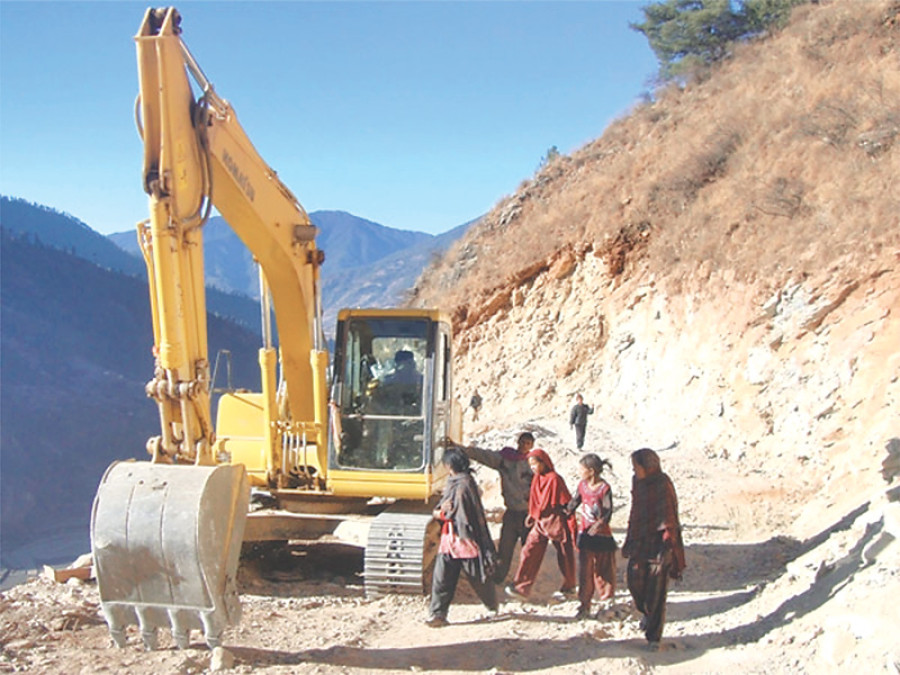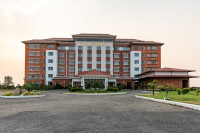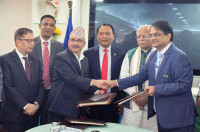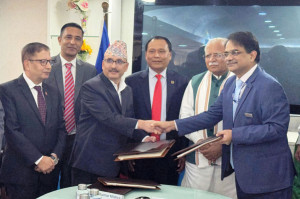Money
Treasury surplus soars to Rs191b as capital spending slacks
The government’s savings has soared by 50 percent since the beginning of this fiscal year, as capital budget could not be utilised on time.
The government’s savings has soared by 50 percent since the beginning of this fiscal year, as capital budget could not be utilised on time.
The government’s treasury surplus, which had stood at around Rs127 billion until mid-July, has jumped to around Rs191 billion at the end of the first quarter of this fiscal year-it , according to Nepal Rastra Bank (NRB).
“The treasury surplus widened largely because of slackness in capital spending,” said NRB Executive Director Nara Bahadur Thapa.
The government allocated Rs311.9 billion for capital expenditure in the current fiscal year, which began in mid-July. But in the last three months it has been able to spend only Rs10.7 billion, or 3.4 percent of that budget, according to the data compiled by the Financial Comptroller General Office (FCGO). The slowdown in capital spending was reported at a time when the annual budget was launched 45 days prior to the beginning of the new fiscal year and was approved by Parliament before the beginning of 2016-17. Considering this trend, it is now almost sure that the Ministry of Finance (MoF)’s target to spend 32 percent of the capital budget in the first four months of the current fiscal year will not be met.
“There has been slackness in capital spending due to change in the government and transfer of key staff at various ministries,” a senior MoF official said on condition of anonymity. “As senior employees were transferred, the new ones are taking time to fully understand programmes prepared by the previous government.” As per the government’s classification, capital spending includes investment in land, building, furniture and fittings, vehicles, plants and machinery, civil works, and capital research and consultancy. In the current fiscal year, the biggest portion of the capital budget—Rs 82.2 billion—has been allocated for post-earthquake reconstruction activities. However, the FCGO data are unclear as to how much of this budget has been utilised in the first three months of the current fiscal year. Other ministries that have obtained biggest pies of the capital budget are: the Ministry of Physical Infrastructure and Transport (MoPIT), the Ministry of Water Supply and Sanitation (MoWSS), the Ministry of Federal Affairs and Local Development, and the Ministry of Irrigation.
But none of them has been able to utilise more than 7 percent of their capital budget, shows the FCGO data.
The worst performer among these ministries was the MoWSS. Out of Rs10 billion capital budget allocated to it this fiscal year, the ministry has so far utilised only Rs 169.2 million, or 1.7 percent of the total budget.
Among others, the MoPIT has been allotted a capital budget of Rs 22.5 billion, but has so far spent only Rs1.2 billion, or 5.3 percent, of that budget. Concerned MoWSS and MoPIT officials were not immediately available for comment. Performance of many other ministries in terms of capital budget utilisation in the first quarter of this fiscal year is very much the same. Nepal has always been lagging behind in utilisation of the capital budget due to lack of project readiness, such as delay in land acquisition process and preparations of procurement plans. Delay in budget approval process and release of budget at various stages have also affected capital spending.
Timely and quality capital spending still remains a far cry in Nepal, resulting in deficit of critical physical infrastructure, like hydroelectric projects, transmission lines, irrigation projects, airports and roads. Consequently, the country has struggled to attract enough private investments, create job opportunities and accelerate economic growth. A recent National Planning Commission report says every rupee that the government contributes to gross fixed capital formation draws investment worth Rs4.40 from the private sector.
This roughly means utilisation of every rupee allocated by the government for capital budget—except for investment made in land—attracts Rs 4.40 in private investment, implying public spending crowds in private investment.




 18.12°C Kathmandu
18.12°C Kathmandu














